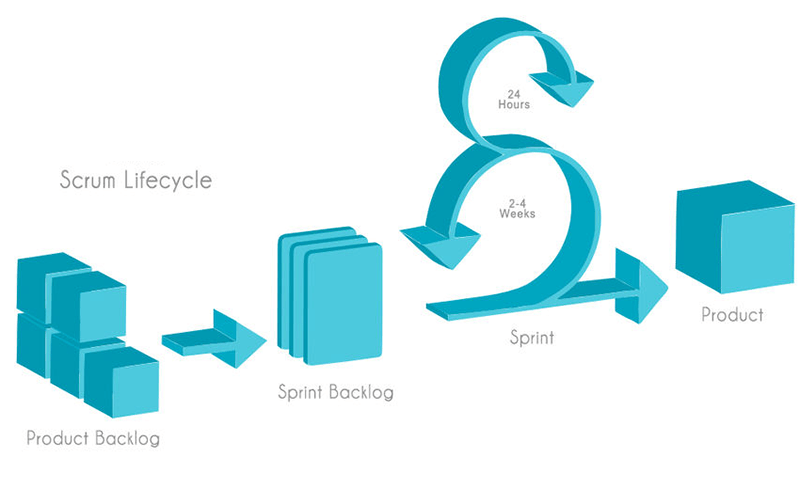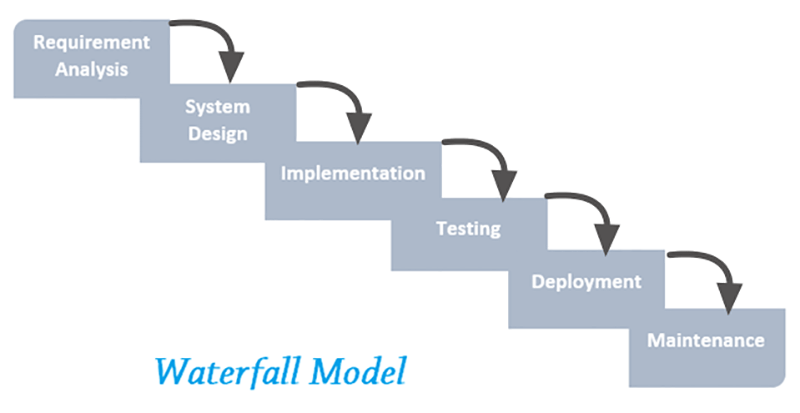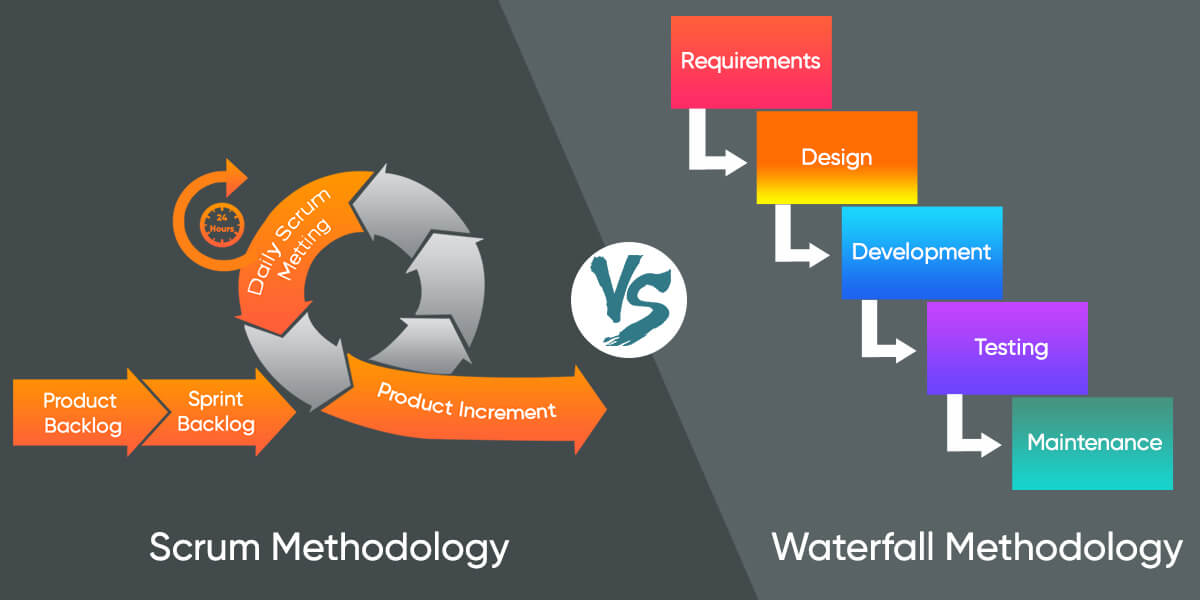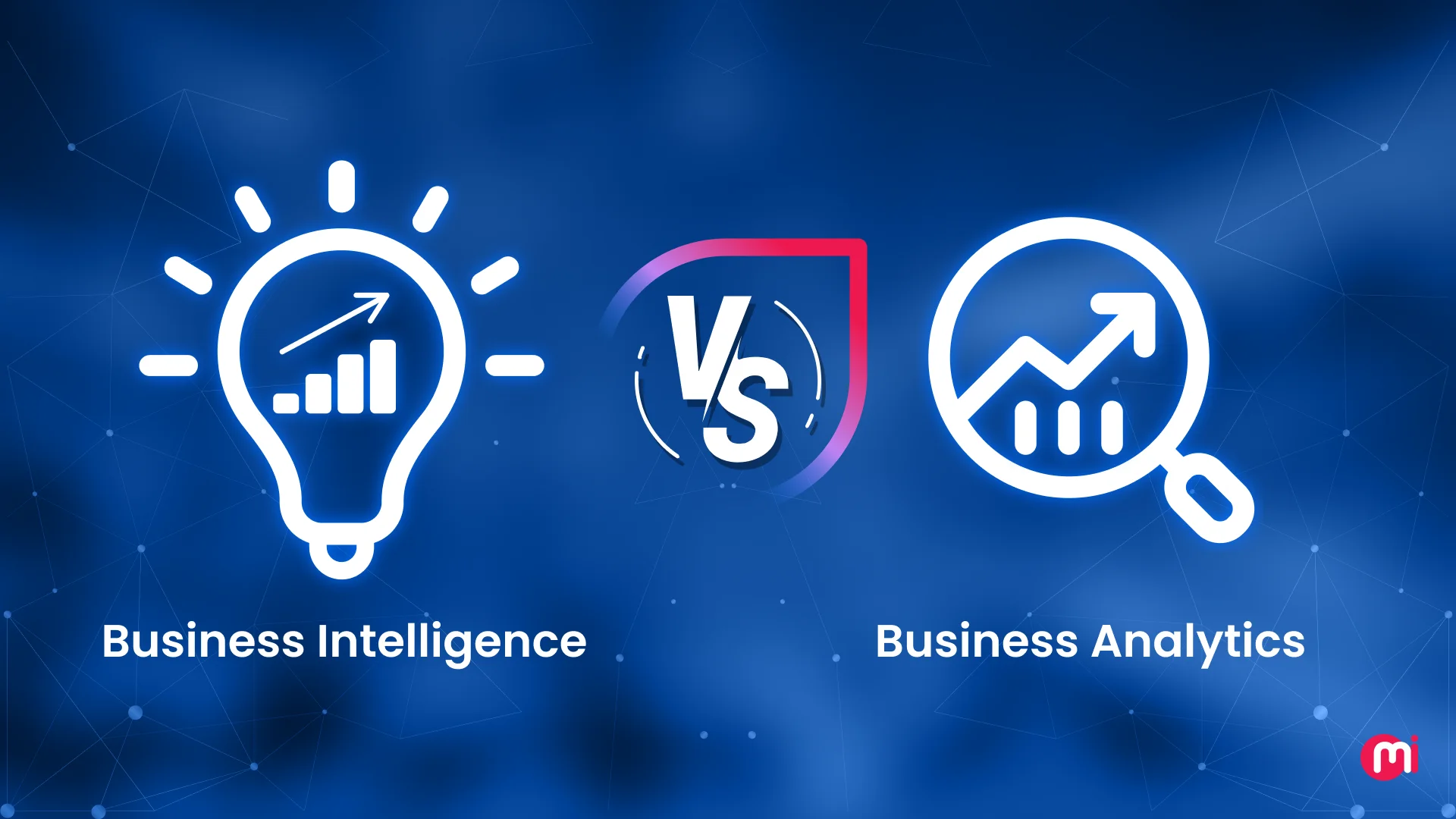Waterfall vs Scrum – Identify the Best Methodology that Suits Your Startup
- Business
- July 3, 2017
With the invention of new software development methodologies, it becomes a challenging task for startup companies to choose the methodology that best suits their project needs.
For a complex mobile app development, it becomes essential to comprehend the project requirements before making any decision to choose the appropriate methodology for the app development.
In addition, budget, time limitation, update requirements, scopes of project, and expertise of professionals are several other criteria that are essential to consider when it comes to making a decision.
In this blog, we have discussed Scrum and Waterfall—two widely used software development models—to help new startups select which methodology best suits their project requirement
What is Scrum?
Scrum is a popular framework and control process to reduce project complexity and enhance focus on developing products that accomplish the precise needs of businesses. It’s a simple yet efficient framework useful for successful team collaboration when it comes to working on complex projects.

In this framework, iterations of fixed length known as sprints that take one or two weeks by the team to deliver software modules on a regular interval and parted features require approaching using an agile methodology. This efficient framework follows a set of tasks, meetings as well as responsibilities that cannot amend.
The four main ceremonies of Scrum that provide structure to all sprints (project steps) include sprint planning, daily stand-up as well as sprint demos and presentations. For the period of each sprint, the team utilizes visual objects to demonstrate progress and get gradual feedback.
The Key Roles of Scrum are:
- The Product Owner – The person who represents the company.
- The Scrum Master – The person who defines three ceremonies that include Sprint Planning, Daily Scrum, and Sprint Retrospection. He is known as a team facilitator and not a team leader or a project manager.
- The Scrum Team – The team is responsible for the development of the project.
The Key Advantage of Scrum
With precise roles and ceremonies, Scrum is known as a prescriptive framework that comprises several benefits.
Enhanced Responsibility of Each Team Member
As there is no project leader to assist the Scrum team, it becomes the collective responsibility of each team member regarding the work that needs to be completed in each sprint.
Mutual understanding requires assisting each other in work and accomplishing the tasks together. It enhances team collaboration and gives authorization to each team member to work independently and efficiently.
Increase Project Visibility
The Scum Team needs to make daily meetings that ensure the team knows what each member is doing which reduces confusion and unnecessary arguments. It makes it easy to find any issues in the initial stage that are helpful for the team to work out prior to it becoming intricate.
Make the Amendment Simple
Using the small part of sprints and regular feedback, it becomes simple to deal with necessary amendments. In case, the owner needs to add any fresh feature in the sprint, they can add it easily in the succeeding sprint at the time of the meeting of backlog refinement.
Need Short Time to Market
The incremental delivery system makes it possible to reduce the time to market the product which helps boost revenue. There is thorough testing at each sprint prior to moving to the next sprint which makes it foolproof. The testing is conducted right through the process enabling team members to change the project scope at any time.
Enhance Quality and Reduce Expenses
As it requires less time to market the product, it becomes highly cost efficient and thorough testing at each sprint enhances the product quality and makes it seamless.
Read also: Best Ways To Speed Up Your Mobile App Development Process
What is Waterfall?
The waterfall model is also known as a linear-sequential life cycle model which is very easy to comprehend and use. In this simple model, it is required to complete each phase fully prior to proceeding to the next phase.

This software development model is useful for projects that are small in size and have precise requirements. It needs to be reviewed after the completion of each phase to determine if everything is perfect or needs to be abandoned or not to continue further.
The testing process is carried out only after the completion of the entire project development. This model is useful when project requirements are clear, precisely known, and predetermined.
The main thing is there are no uncertain requirements, stable product definition and known technology. When the project is small and sufficient resources available freely with the required proficiency, it gives fruitful outcomes.
Sequential Design Process of Waterfall
The phases of this model include Conception, Initiation, Analysis, System Design, Construction, Testing, Implementation and maintenance.
The Key Advantage of Waterfall
- This easy to use and managed software development model follows a sequential pattern which is similar for all projects. The project team can work on it directly without any training or experience to work with this model.
- Phases need to be completed one by one and do not overlap. Due to the model rigidity, each phase has precise deliverables and a review process.
- In every phase, it requires documentation that results in an easy understanding of the logic of the coding and testing process.
- This model is most appropriate for small size projects having well-defined and clear requirements. This makes it easy to deliver the project on time.
Conclusion
When it comes to making a decision to identify the best methodology that suits your startup between Scrum and Waterfall, it depends on the scope, size, amendment and several other criteria in addition to the budget of the project.
As in the Waterfall model, you cannot go back and make any changes; it becomes highly expensive for big sized and complex projects. If your project is small in size and all requirements are clear and known, you can choose the waterfall model.
Where in the Scrum Model, there are no limitations for amendment; it becomes uncertain to define project deadlines. Moreover, team members need experience and expertise with dedication to accomplish the given task.
Agile is a larger technique that emphasizes iterative development and adaptability, whereas Scrum is a specific framework within Agile that provides a structured approach to project management with defined roles, rituals, and iterations (sprints).













